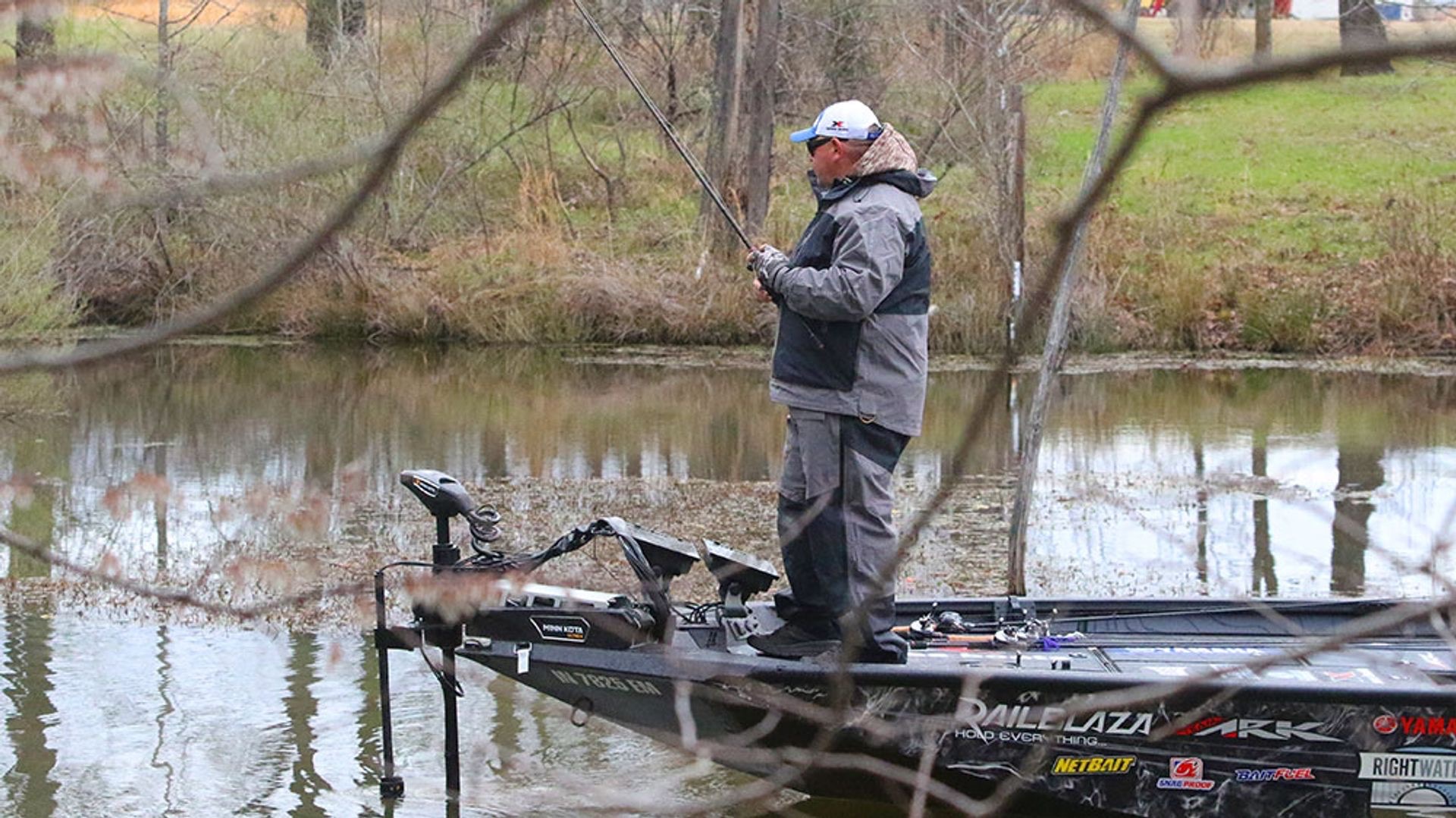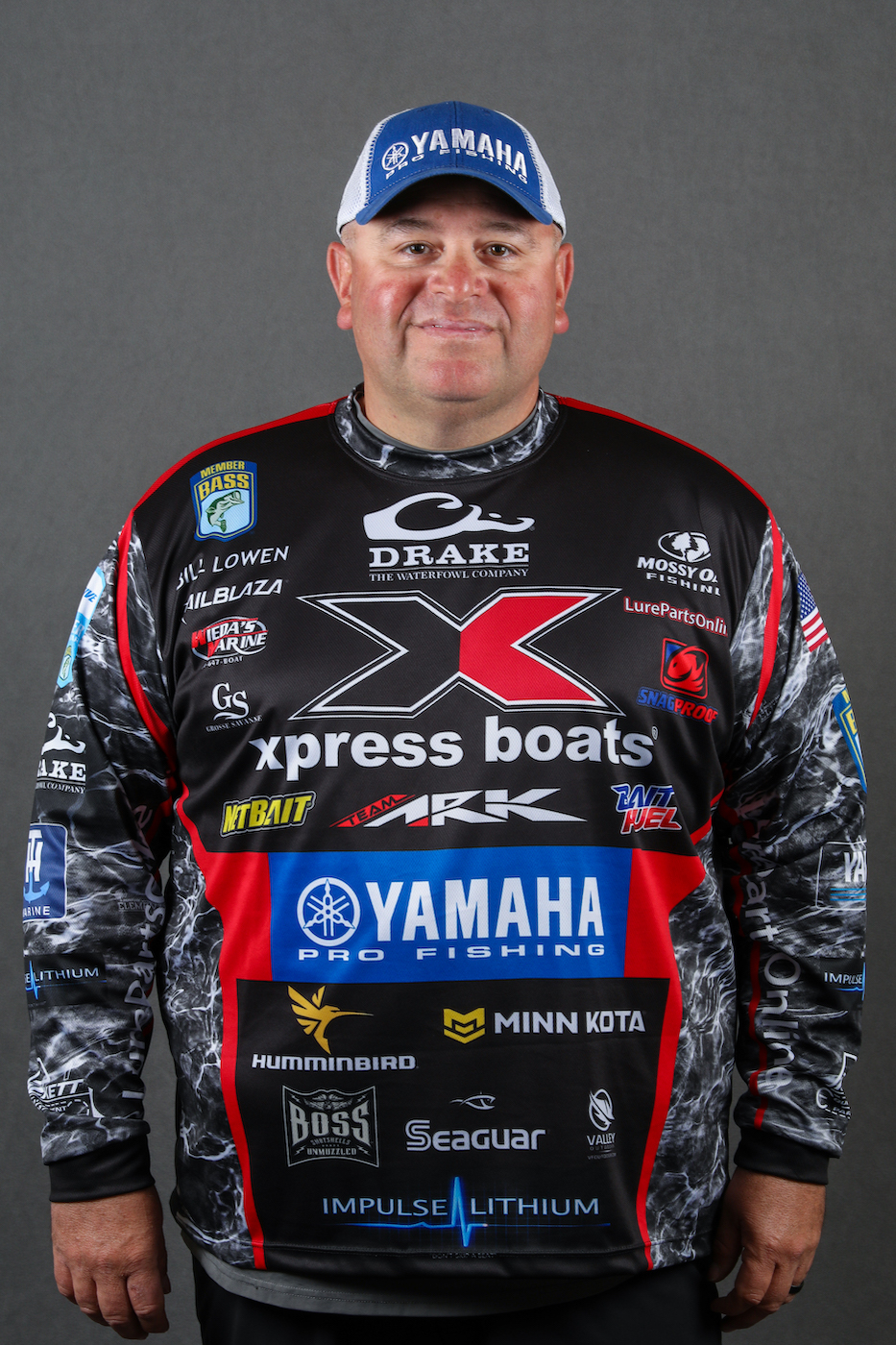
Forward-facing sonar has become a must on the tournament scene lately, but I want to make sure the traditional techniques don’t get left behind. When it comes to the most exciting fishing techniques, flipping and pitching definitely rank highly. There is nothing like that short line, close quarters battle with big largemouth thrashing around to get your heart rate up and make your jaw drop with excitement.
Being a shallow water specialist, I learned to rely on the flipping and pitching techniques early in my tournament career. Yes, I love to throw a swim jig, a shallow crankbait and s spinnerbait, but growing up on the Ohio River, flipping and pitching dominated most of the tournaments, so I worked to become better at the techniques and learned to love them.
As I started practicing the methods, I became more and more intrigued by the skill of the “flippers” on tour, and I guess because he was from Missouri and I was from Ohio — both northerners — I really began to follow Denny Brauer. He was so good with his flippin’ stick and that jig, that I just had to study what he did. He was a master at presentation and was always in the right position to react.
As I began to work on those techniques on the waters at home, I learned three things to do on the Ohio River that gave me a better chance than my competitors. I had to make the right presentations, I had to present at the right angles and I had to be willing to put the lure where most others wouldn’t dare.
The important part to think about your presentation is the lure has to surprise the fish. That means you have to make the lure enter the water softly. Big splashes will often spook the fish, and that makes it a lot harder to trigger bites. A lure that simply appears in front of the bass often creates a reflex strike where the bass just snaps and strikes the bait.
Practice making soft entries by pitching the lure out with a low trajectory and actually slightly raising the rod tip while feathering the spool so the lure slows down as it nears the target. As the lure enters the water, get into position so you can react to the quick bite that may come. Being disciplined with rod control is important here.
You have to be willing to put the lure where most anglers won’t. Look for small openings in cover or skip it further under docks than most. A little effort to try difficult placements can result in getting bites other anglers won’t. The final key to this is to try and pay attention to angles when presenting the lure. Try to see a path to get a fish out of cover once you have set the hook. Yes, you have to be aggressive with your placements, but try to make those flips in a way that you can get the fish out.
My gear is important. I prefer a rod that is strong, but has a parabolic action, meaning it bends deeper into the rod blank. This kind of taper helps land more fish when they are thrashing in heavy cover or close to the boat. I use a 7-foot, 6-inch heavy action ARK Invoker Tour or the new Wes Logan Signature Flipping rod for this application. I like a high-speed gear ratio reel, but not so high that I lose power when fighting fish. My reel of choice is the 7.1:1 ARK Gravity G7 for this application.
One thing about the reel is the Gravity Braking System our owner Louie Zhang designed. The reel has 60 different brake settings that let me fine tune the spool tension to make my lure presentations easier. The lighter the brake settings, the less I have to snap the rod to make the lure go, and that makes it easier to create soft entries.
I always flip with Seaguar Tatsu Fluorocarbon in 20- or 22-pound test. Tatsu is unbelievably strong, but it also happens to be very manageable. It stays limp and straight, so it makes it easier to detect strikes when watching your line. I keep an eye on my line at all times, and so should you. You wouldn’t believe how many strikes I see before I ever feel them — so be a line watcher.
Finally, let’s talk lures. I prefer to flip jigs because they tend to draw bites from bigger fish. I designed jigs for Lure Parts Online that are my Signature Flipping Jigs. With Lure Parts Online, you buy the heads and skirts separately which actually allows you to customize your baits but saves you a little money in the process. Take a look at them here.
The Finesse Jig comes in 3/16-, 5/16- and 7/16-ounce sizes and is the jig I use when there is a lot of fishing pressure on the lake, or a cold front comes through. I put one of my Fine Cut Skirts on this head and there are only two trailers to use on it — a Min B Bug or Tiny Paca Chunk from NetBait.
The rest of the time, I choose my Signature Flipping Jig with the 4/0 hook in it. I typically start with the 3/8-ounce model then adjust up or down in weight depending on the type of reaction I am getting from the fish. I’ll pair this one with one of my standard cut skirts and use a Paca Chuk when I want a flapping type action or the B Bug when I want a faster rate of fall.
Flipping and pitching have probably accounted for more big bass than any presentation other than swimbaits. It’s a technique I have used throughout my career, and you owe it to yourself to give it a try.





